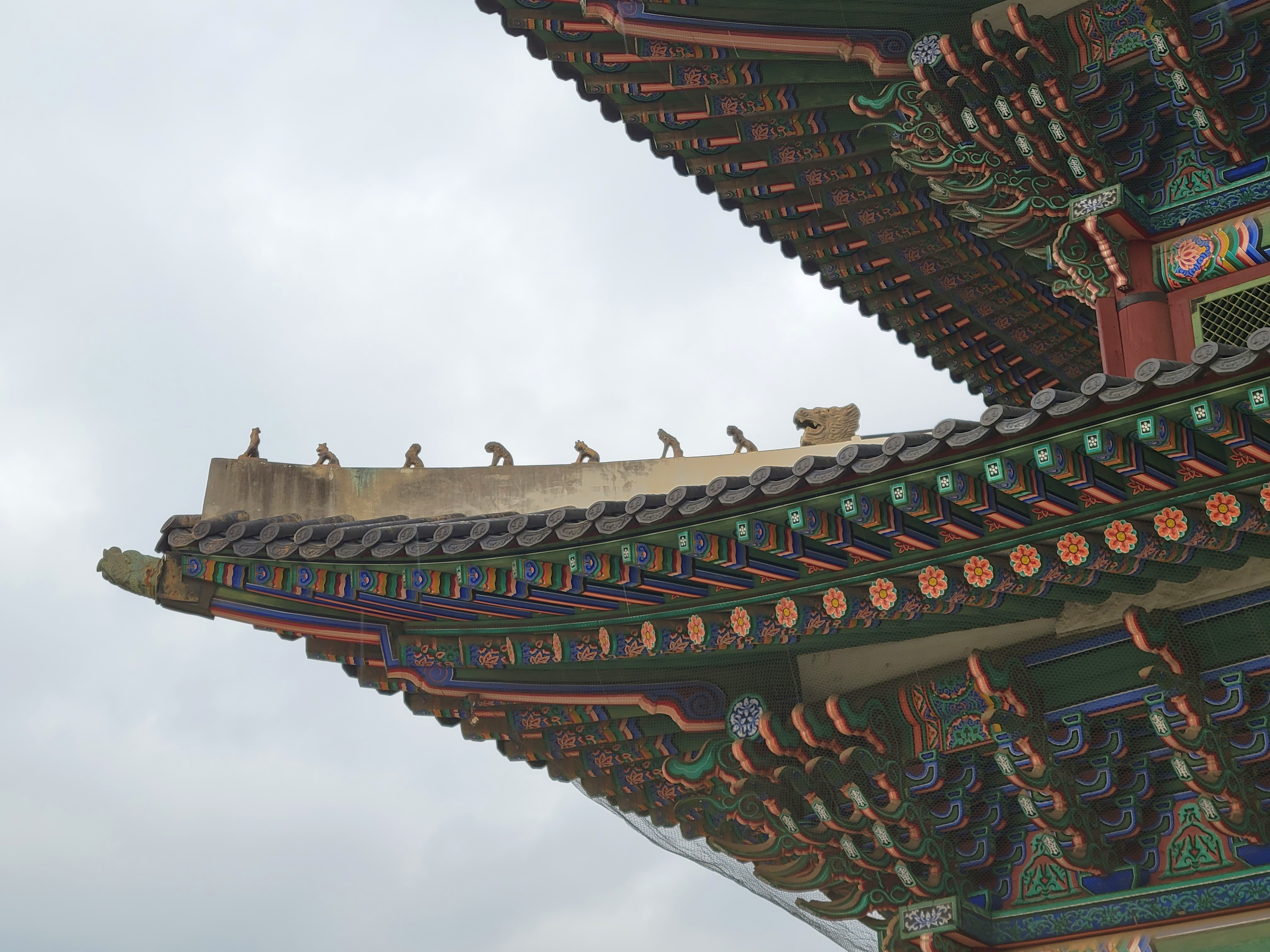 Let’s talk more about Korean gargoyles!
Let’s talk more about Korean gargoyles!
This is a photo of Gyeongbokgung Palace (경복궁) in Seoul. When you see royal palaces or residencies around Korea you will see a special edition to the rooftop. The little stone figures are called Japsang (잡상), they always go in a specific order, and they are guardians of the palace and the nobility inside.
Japsang first were recorded during the Goryo Dynasty (918-1392CE) and became more prominent or popular during the Joseon dynasty (1392-1897CE).
Unlike the European counterparts that were often carved as simple grotesques without names or history the Japsang have names, always come in odd numbers (there’s seven in the photo, the dragon head is not a Japsang), and are often in the same order. The names mostly come from the Chinese novel JOURNEY TO THE WEST, a popular story that everyone in the area would have probably known.
The animals most often depicted as Japsang were the monkey (the monkey king Sun Wukong), lion, giraffe, sea horse, haetae (a scaled unicorn-lion with a bell on its throat – they look like guardian dogs to me), phoenix, and dragon.
And, while European gargoyles were busy protecting their buildings from flooding by being downspouts, Korean japsang were meant to protect their buildings from fire with shamanic magic.
How does this play into ALL I WANT FOR CHRISTMAS IS A GARGOYLE? I’m glad you asked! And, next week, you’ll know! Go pre-order ALL I WANT FOR CHRISTMAS IS A GARGOYLE and come spend a magical holiday season with me in Seoul.
Ebook | Print | Inkprint Press | Braille Edition
🖤 Chapter 1
🖤 Teaser Scene 1: Meet The Hero (Iris’s point of view)
🖤 Teaser Scene 2: Max Sees Iris For The First Time



